Hancock County, Mississippi, USA (March 2007)
[EDITOR’S NOTE: This page will remain active for historical purposes although please be advised that the visitor center, tours and levels of security have changed considerably since this 2007 visit. See the pages written after our 2015 and 2019 visits for more recent summaries. Also, please contact the INFINITY Science Center directly for tour information.]
Stennis Space Center serves as the National Aeronautics and Space Administration’s primary location for rocket propulsion testing. It occupies a sizable chunk of Hancock County, along Mississippi’s Gulf Coast (map). The actual test facility includes about 13,500 acres of land. However, the larger Space Center itself encompasses a much larger 125,000 acre buffer zone. That makes sure resulting noises don’t adversely impact people in surrounding communities.
Hop on the Bus
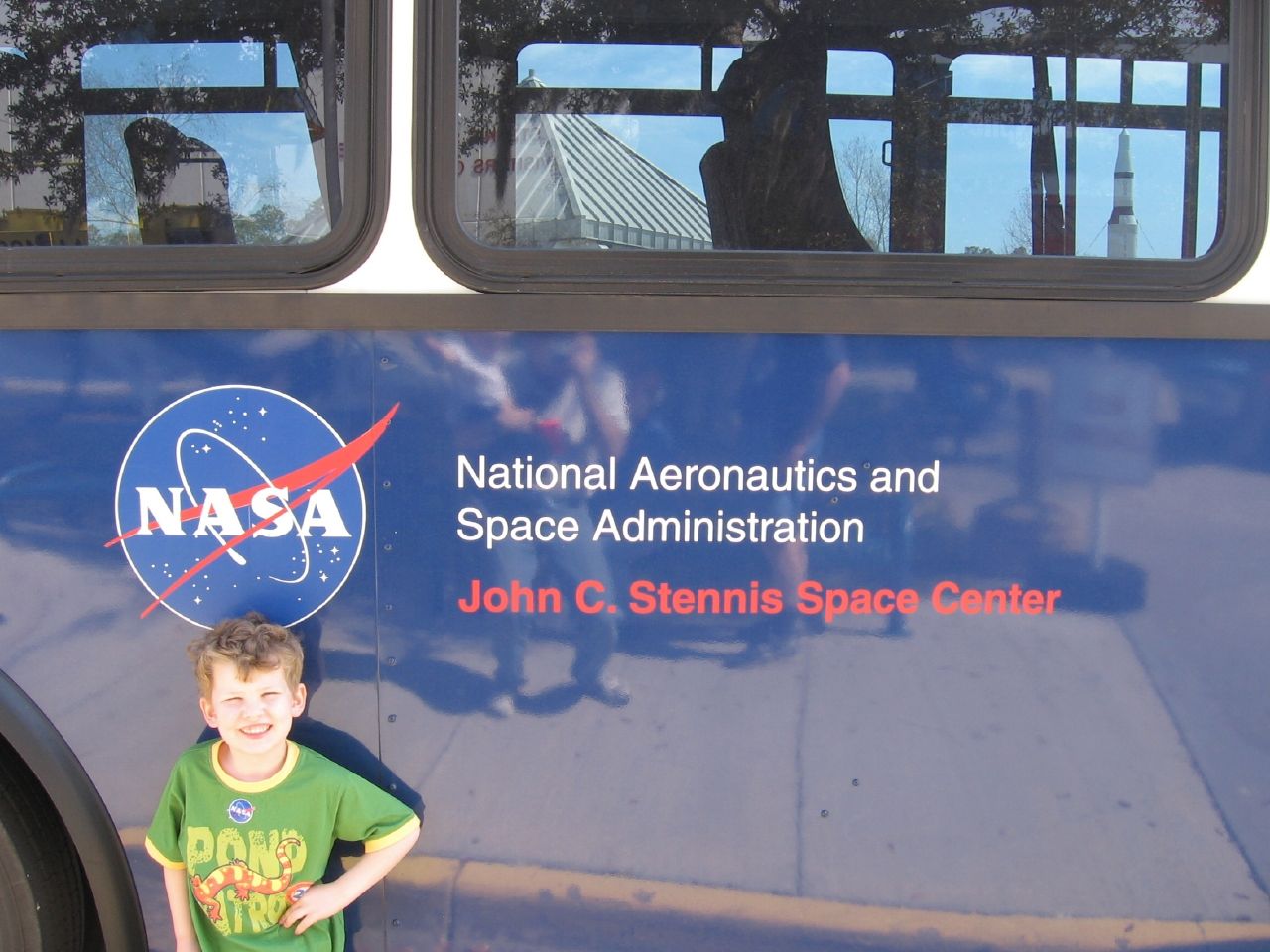
Our visit to NASA’s Stennis Space Center began at an Interstate 10 rest stop in Hancock County, Mississippi, just over the border from Louisiana (Exit 2). All public tours start here. We arrived at the receiving center, showed our identification, clipped-on our visitor badges and climbed aboard a shuttle bus like the one shown above.
Stennis sat a couple miles further north but tourists can’t drive onto the facility like they once could in the past. Fortunately NASA provides comfortable buses and the ride doesn’t take long.
The Old Canal

We passed a canal with locks as we traveled north onto the base. The guide explained that the old Saturn V rockets used by NASA during the Apollo days couldn’t be shipped by truck or rail due to their size. Barges floated them up from the Gulf of Mexico.
The elevation of coastal Mississippi barely pokes above sea level. However, it’s not completely flat so the final part of the journey involved raising the barges as they traveled a few miles inland to the testing complex.
Testing Engines
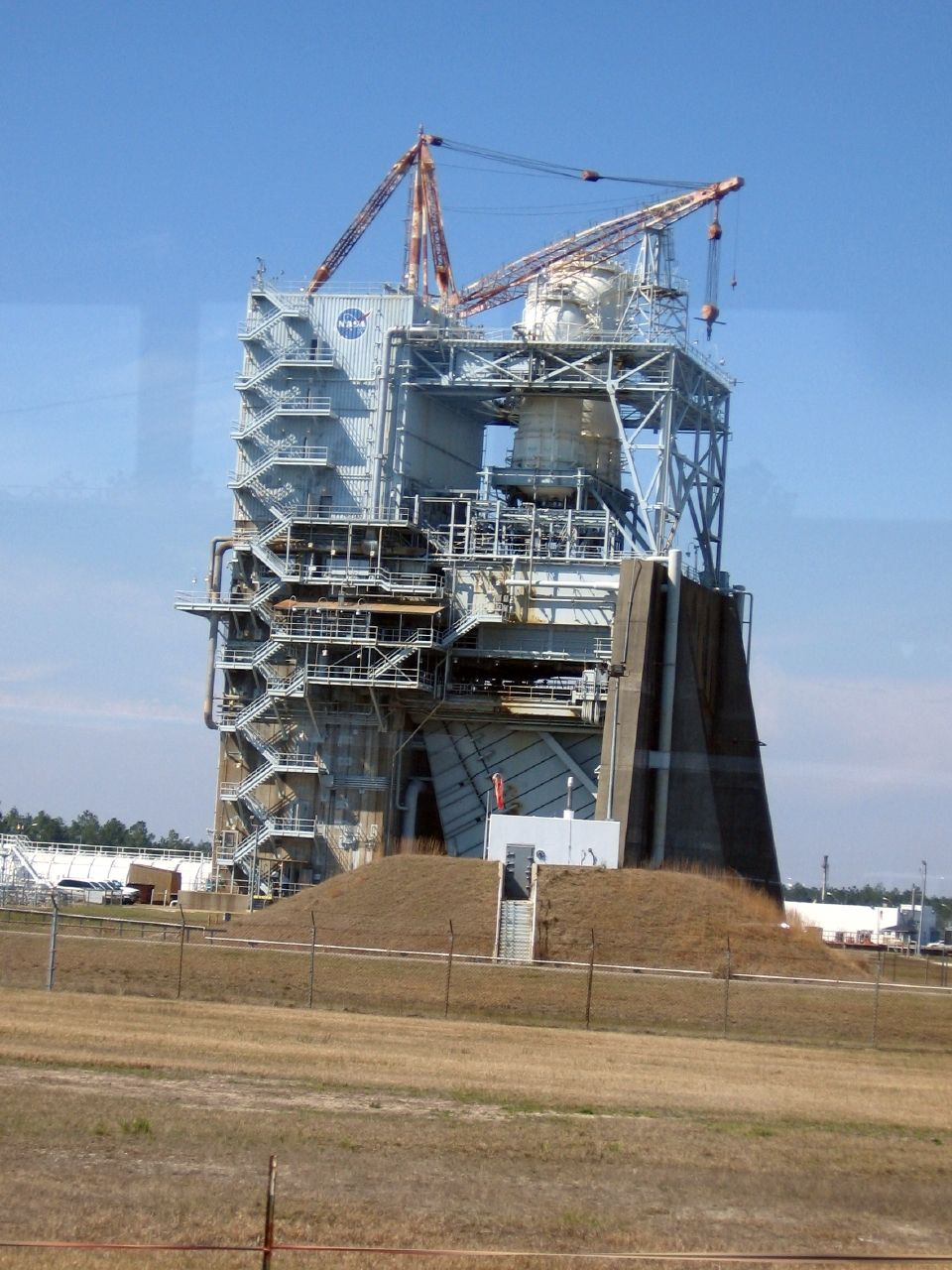
Rocket engines must be evaluated with very strong and stable structures known as test complexes due to their extreme power. We passed several such structures during our bus tour. They can be used on the Space Shuttle after successful testing. NASA used the same structures to test the first and second stages of Saturn V rockets for the Apollo and Skylab missions in the 1960’s and 1970’s.
Rainmaker
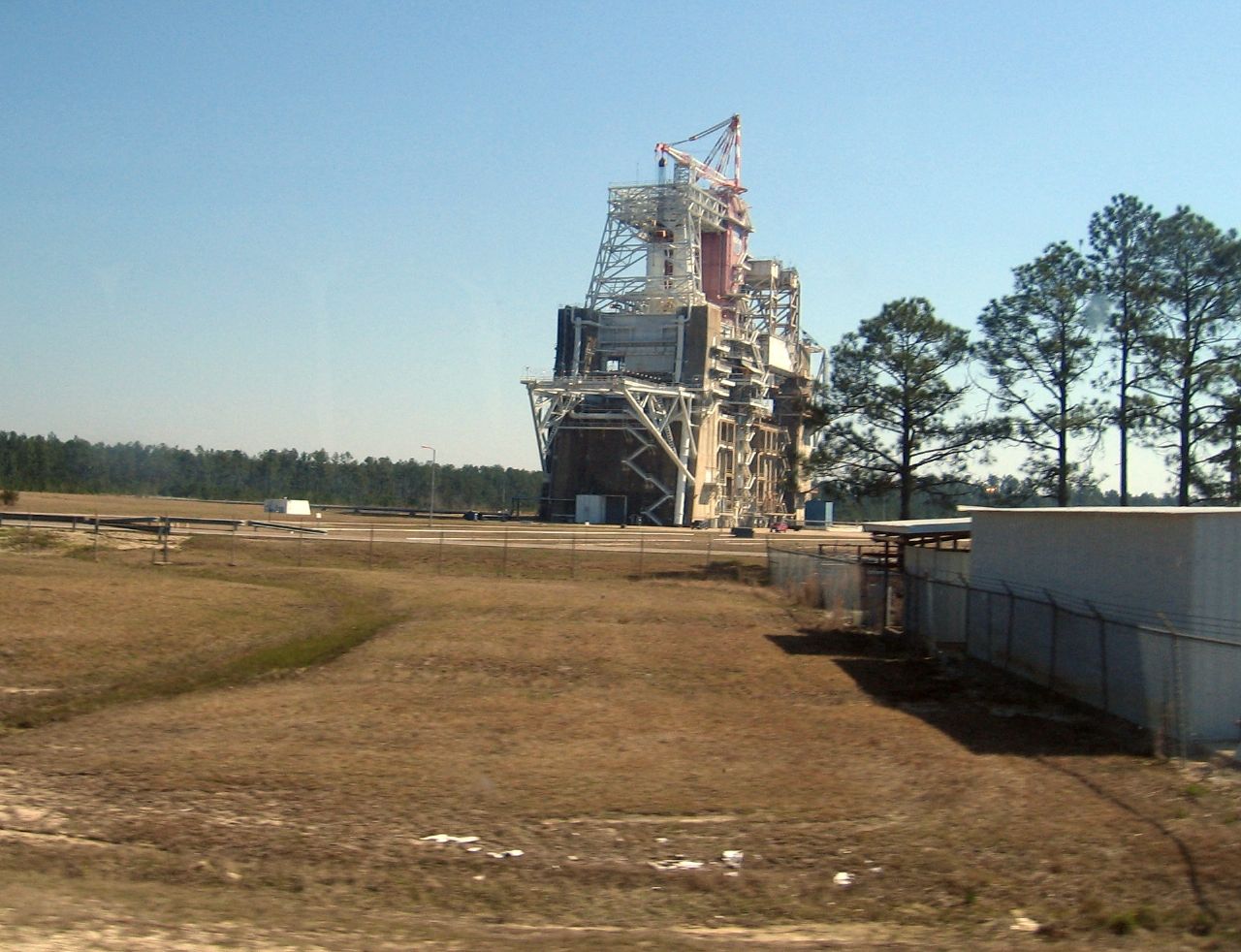
We continued on the tour, passing more rocket test complexes. I’ve been told by people who have been lucky enough to witness these tests that the resulting plume of smoke creates a brief rainstorm in the immediate area after the engines fire.
Once the bus completed its circuit of outdoor facilities, it dropped passengers off at the visitor center.
Walk in Space
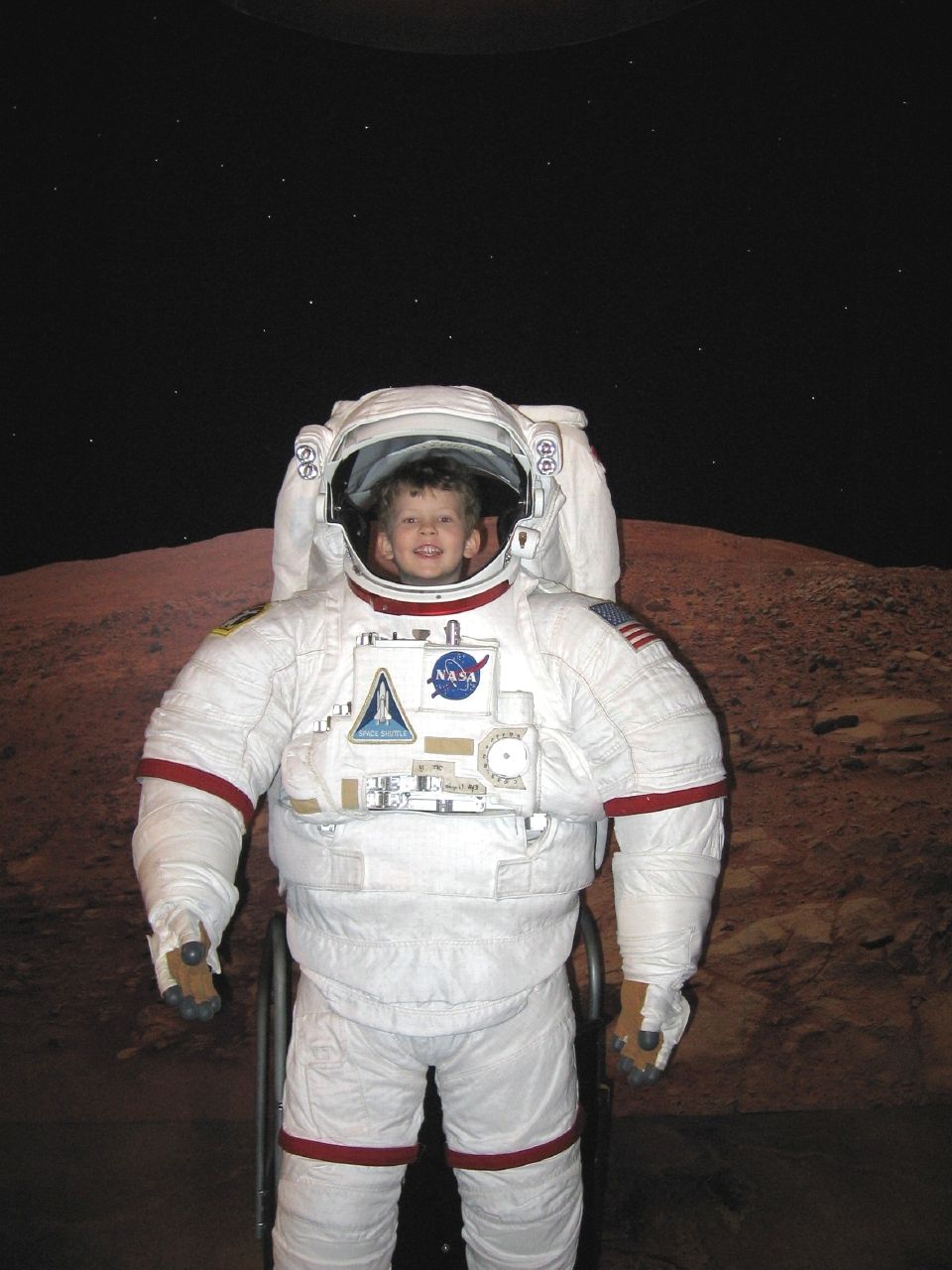
We got to try numerous hands-on, interactive exhibits at the StenniSphere. Here one of our little guys got to pretend he was an astronaut on an interplanetary spacewalk. He didn’t actually wear the suit. The back had been removed and if you look closely you can see the sides of the little ladder that let him climb into it. Nonetheless he enjoyed being a “real astronaut” and now might be set for a future NASA career.
Fly the Shuttle

He also got to fly in a model of the space shuttle cockpit. This exhibit included computer simulations that allowed visitors to attempt a variety of tasks performed routinely on actual space shuttle missions. One of them operated a robot arm to retrieve a communications satellite. Fortunately for us it was only a simulation. Otherwise the satellite would have gone spinning off into space.
Engine Test
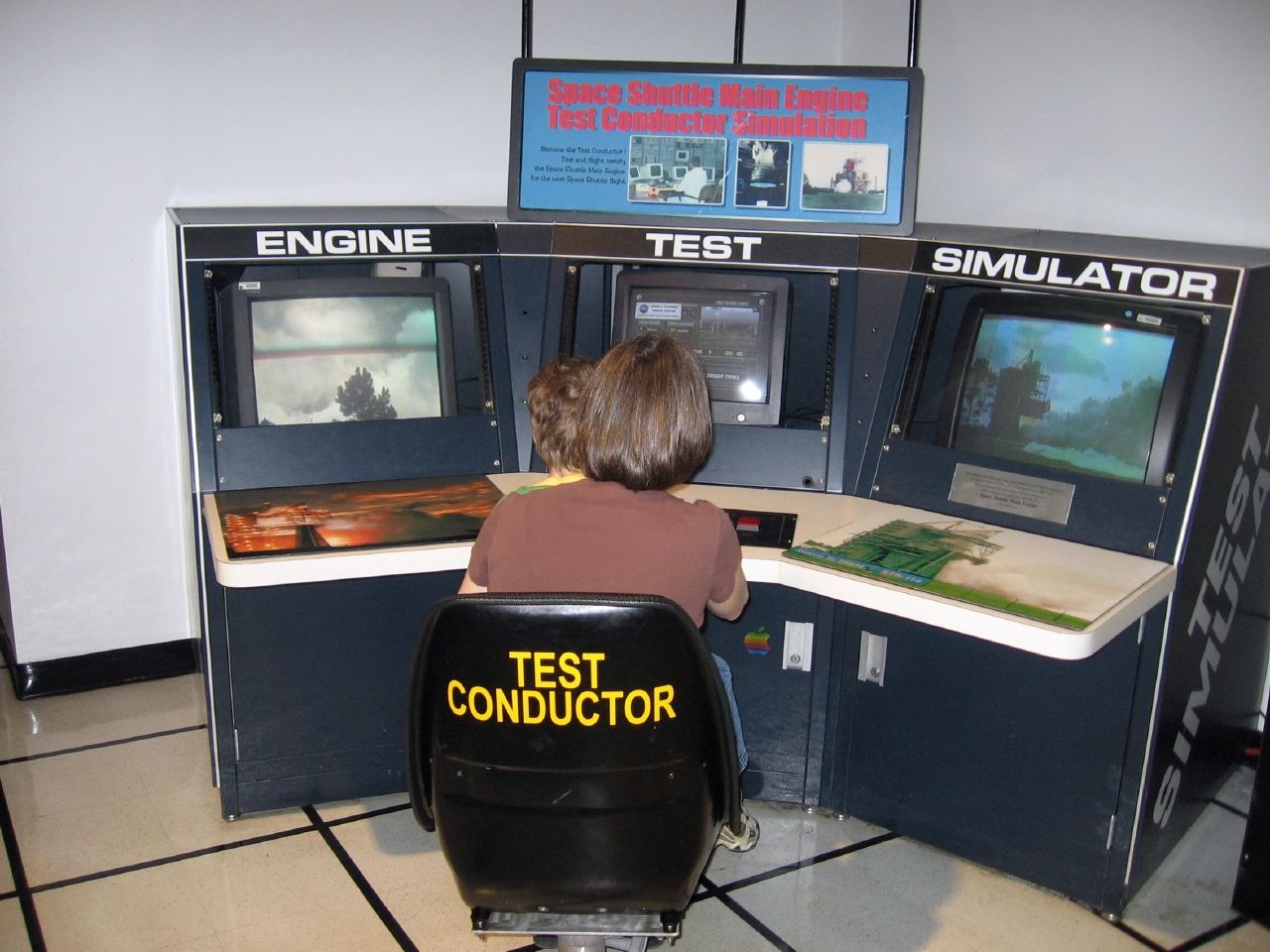
Another exhibit allowed visitors to simulate rocket engine tests like those performed by real NASA scientists at Stennis. Participants proceeded through a series of steps, which if followed correctly resulted in a successful firing of the rocket engines.
Rocket Booster
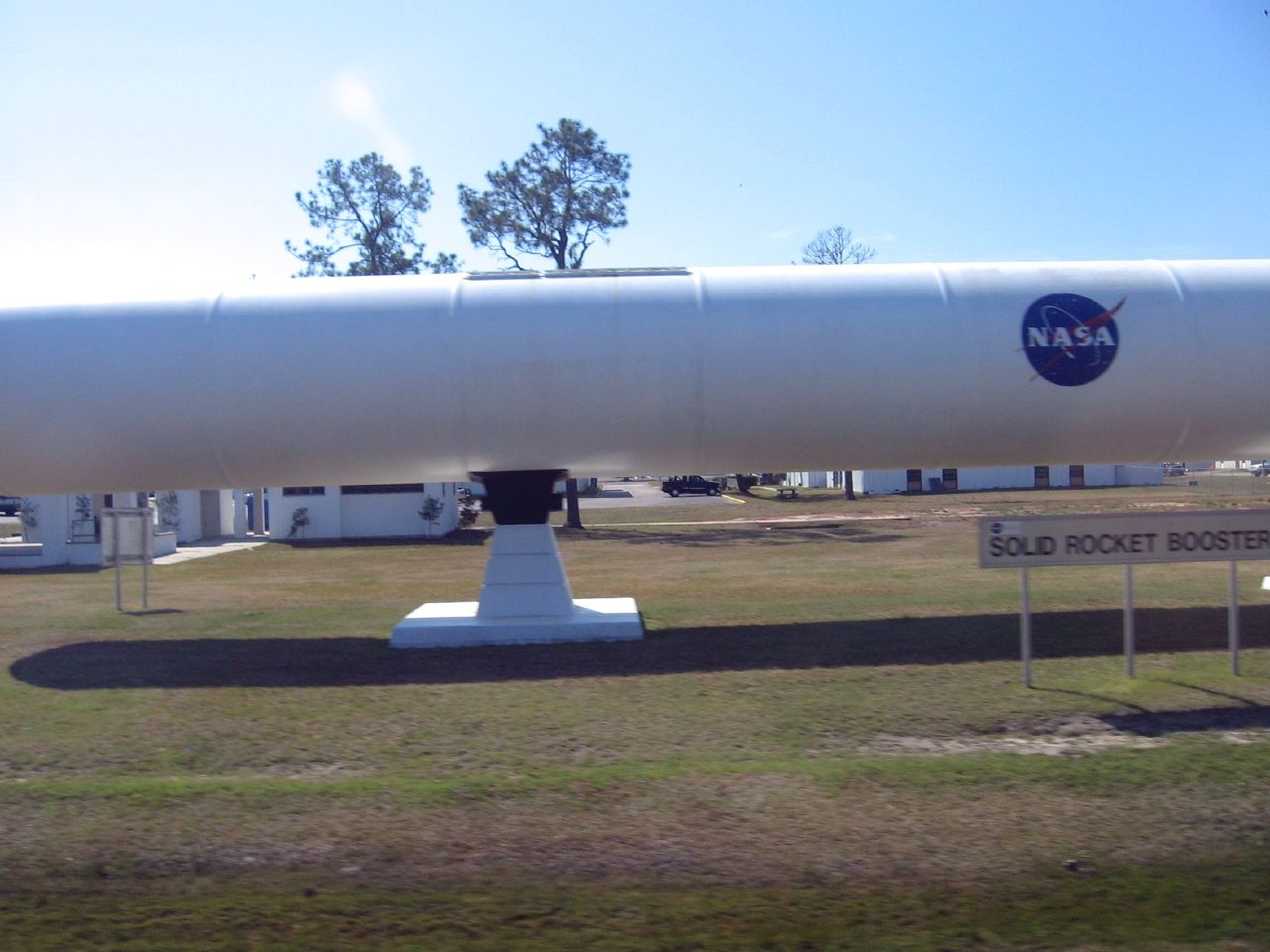
Larger items could not fit within the Visitor Center so they sat outside on the immediate grounds where people could wander among them. This photo shows a solid rocket booster that NASA used for the Space Shuttle program. Crews recover and reuse them after each Space Shuttle launch.
Engine
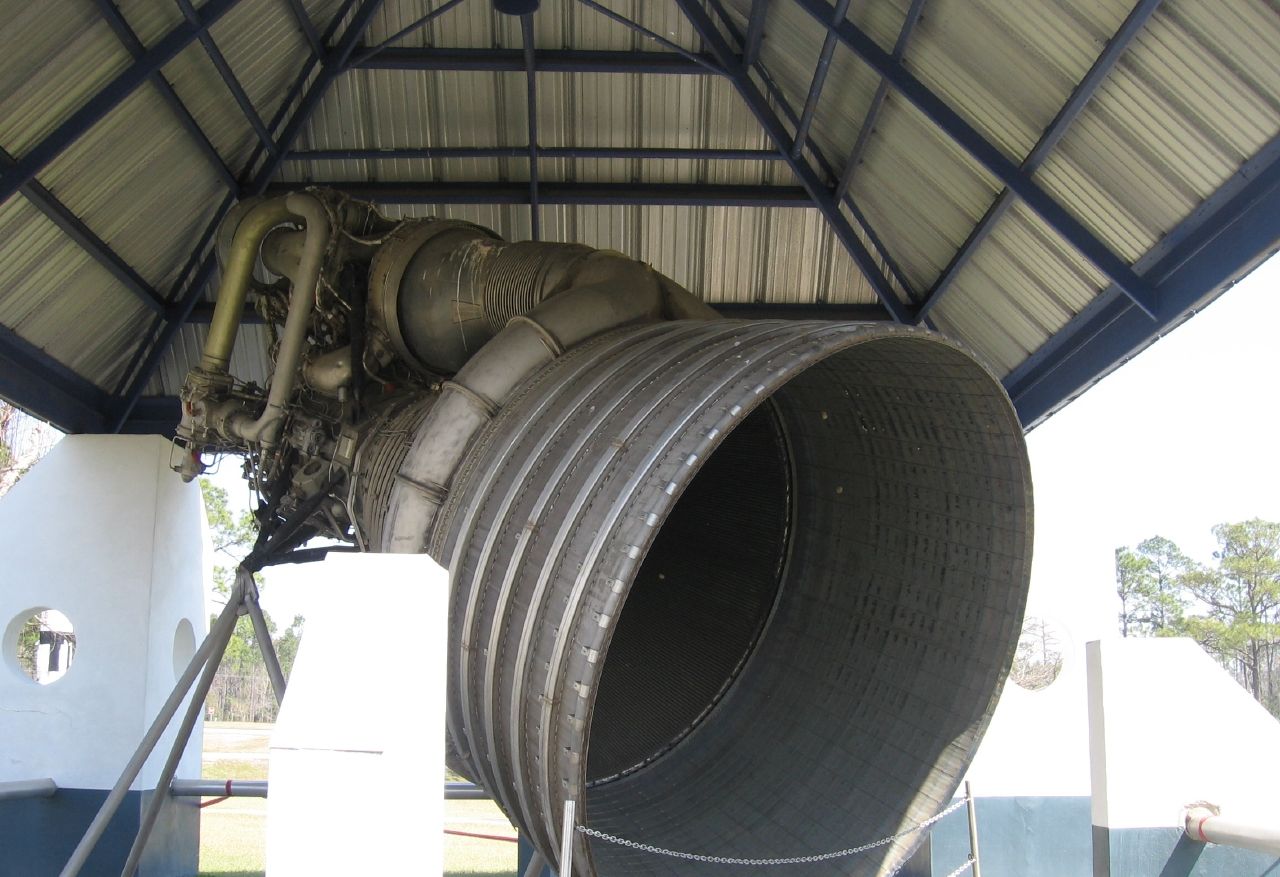
This photo shows an example of an F-1 rocket engine used on the first stage of a Saturn V vehicle for the Apollo program. Powerful engines like this one carried men safely to the moon. At Stennis we could venture right up to the historic objects and pioneering rockets that made space exploration possible.
*** PLEASE READ BEFORE COMMENTING ***
As noted above, I do not have any information about tours. Please contact the INFINITY Science Center directly for tour information.]

Leave a Reply